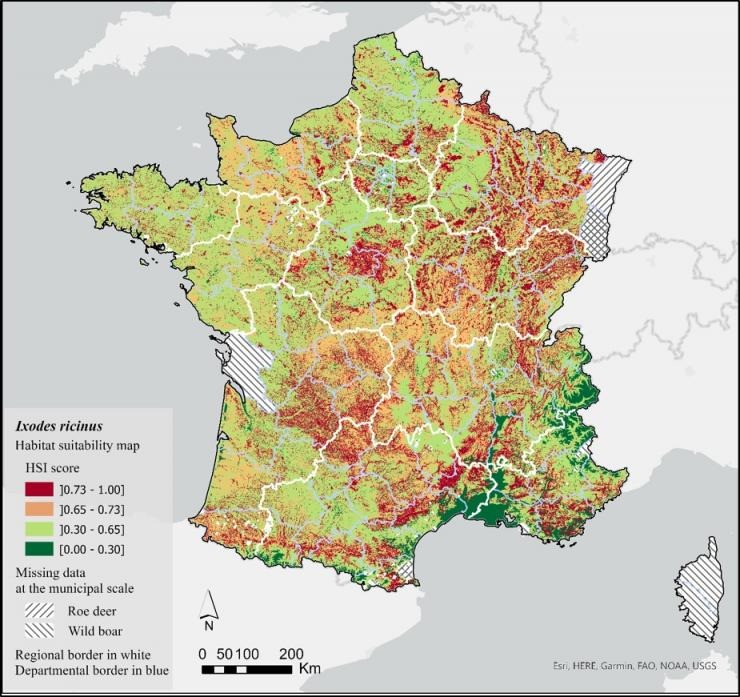Posted 11 hours ago,
Reading 2 mins.
These weather maps would make it possible to assess and prevent the risks of bites according to the seasons, the weather, but also the French geographical areas.
Spring marks the great return of ticks. And with them, the risk of infection is increased tenfold. Babebiosis, tularemia, Lyme disease… The conditions transmitted by these parasitic mites are multiple. To better understand their activity, “weather maps” are being developed for metropolitan France.
Better assess the risk of bites
In France, the tick Ixodes ricinus is present in almost the entire territory. When infected, it can transmit bacteria, parasites and viruses to humans through a bite.
To combat these inconveniences, the National Research Institute for Agriculture, Food and the Environment (INRAE), VetAgro Sup, the National Agency for Food, Environmental and Occupational Health Safety (Anses), the company Boehringer Ingelheim and the Center for International Cooperation in Agronomic Research for Development (CIRAD), have set up observation campaigns.
The researchers relied in particular on the data collected in 7 observatories with different climates and environments.
Their results, published in Geospatial Health and Scientific Reportshave made it possible to develop “both a map showing the areas most favorable to the presence and activity of Ixodes ricinus ticks and a model to estimate tick activity according to location, season and weather variations“.
For researchers, these two supports are complementary. The map and the model will make it possible to better assess the risks of bites and to adapt prevention messages according to the geographical area.

Subsequently, these two media will be merged to produce “weather maps”. The goal? Better predict the risk of tick bites. As a reminder, the activity of ticks also depends on weather conditions: hot and very humid weather favors their reproduction.
“This is interesting progress because it makes it possible to qualify the risk in each French region. The tool will make it possible to inform local authorities in real time about tick activities while helping them to launch preventive actions”confirms Bertrand Pasquet, president of the ChroniLyme Association.
This approach is part of the national plan to combat Lyme disease and tick-borne diseases.
Tick bite: when to consult?
On a walk in the forest, or even in his garden, a tick bite quickly arrived. A small red plaque, often responsible for itching, may appear immediately or within the first 24 hours after the bite. This reaction is common and does not necessarily require a medical visit.
Some more fragile people should, on the other hand, consult their doctor as soon as possible. It’s about :
- Pregnant women;
- Children under 8 years old;
- immunocompromised people.
Similarly, if the tick remains implanted for more than 36 hours, if it is engorged with blood or if a red plaque develops several days after the bite (erythema migrans), a consultation with a doctor is essential.
Abnormal symptoms should also alert you: unexplained pain, fever and fatigue, joint pain, neurological disorders, etc.
